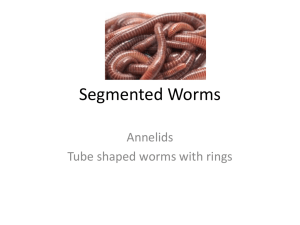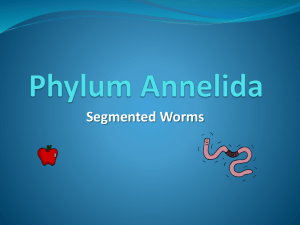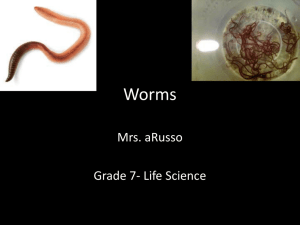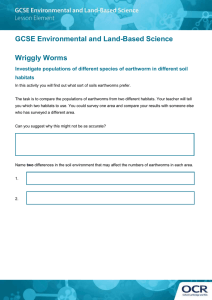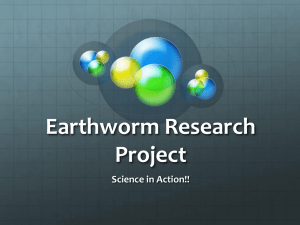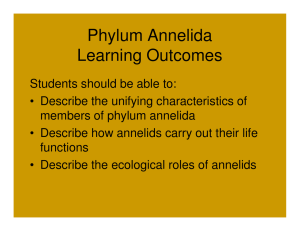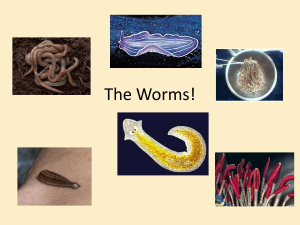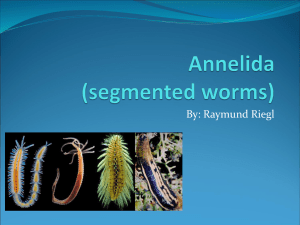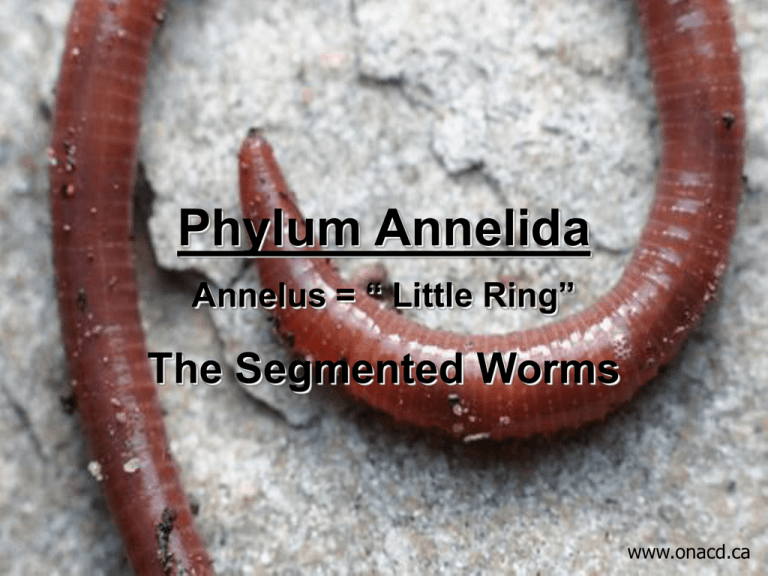
Phylum Annelida
Annelus = “ Little Ring”
The Segmented Worms
www.onacd.ca
3 Major Classes in Phylum Annelida
Class Oligochaeta: the
earthworms
Class Hirudinea : The
leeches
Class Polycheata: The
marine worms
Identifying Characteristics of the Annelids
Have a TRUE COELOM (body cavity which allows them
to have true organ systems and muscular layers)
Posses complex digestive & circulatory systems as well
as defined nervous and excretory systems
No developed respiratory system as they exchange O2
and CO2 via moist epidermis
Are segmented into a sequence of compartments by
septa. Segments are marked by rings called annuli
Reproduce sexually and some asexually by
regeneration and fission
Are hermaphroditic with cross fertilization
Are found in terrestrial, freshwater and marine
environments
Can range in size from less than 1 mm to over 3 meters
(the seep tube worm)
Example: The Earthworm
- Digestive system is a one way tube including a mouth and anus with
specialization of digestive organs (esophagus, crop, gizzard, and intestines)
- Closed circulatory system with blood contained in blood vessels. Presence
of a primitive heart and hemoglobin in the blood to carry O2
- Excretory system includes nephridia (primitive kidneys) which eliminate
waste from the blood
- Nervous system includes cephalization with a primitive brain and ventral
nerve cord. No defined sensory organs
Earthworm Reproduction
Although earthworms
are hermaphroditic
(produce both eggs
and sperm) they
must still copulate
in order to mix their
gametes
Earthworms are also
capable of regrowing amputated
segments of their
bodies
Mating Earthworms
Ecological Importance of Annelids
Oligochaete Worm
Form the base of many
food chains
House parasites such as
Protozoa,
Platyhelminthes and
Nematodes
Aerate & mix the soil and
are constructive to
mineralization and
nutrient uptake by
vegetation
Certain species mix the
surface and mineral soil
by traveling between the
two
Biological Roles include:
acting as composters and
helping to create dead organic
matter into fertile soil
Chemical Roles include:
helping to cycle nutrients and
minerals through the soil
through their casts (worm
poop!)
Increasing the levels of
nitrogen, phosphates and
potash
Physical Roles include:
burrowing and keeping the soil
structure open (aerating the
soil and providing a path for
drainage)
Random Annelid Facts
In the New Zealand Maori culture NOKE
is an earthworm dish sold as a delicacy
Lumbriculus and Aulophorus (species
of annelids) are known to reproduce by
the penis breaking into fragments and
then forming whole new worms!

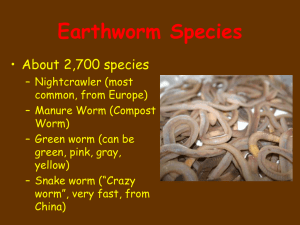

![earthworm [annelid – segmented worm]](http://s3.studylib.net/store/data/008502476_1-3ebb28d32ff3e90b09ed01ec69126429-300x300.png)
